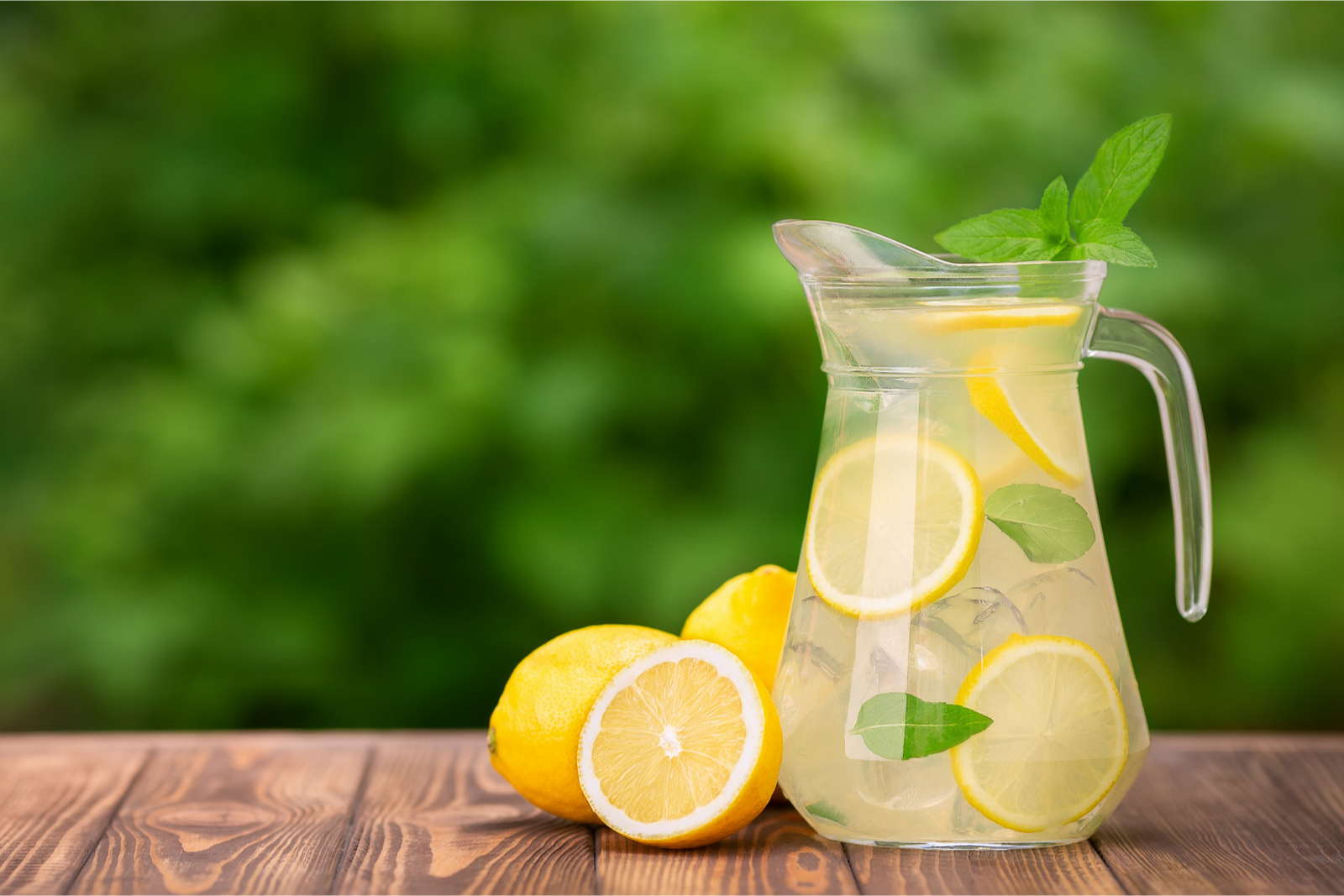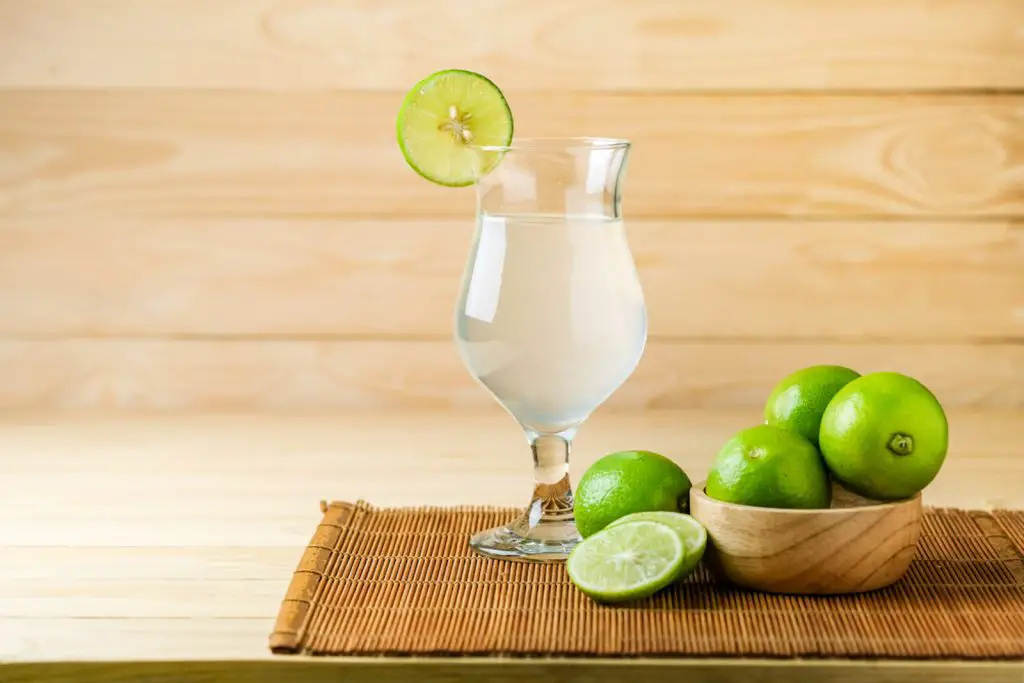
Lemonade, with its refreshing and citrusy flavor, is a beloved and timeless beverage that quenches thirst and provides a delightful respite on hot summer days. Made from a simple combination of freshly squeezed lemon juice, water, and sweetener, this classic drink offers a perfect balance of tartness and sweetness that is adored by people of all ages. Whether enjoyed as a backyard picnic companion or as a cooling treat by the poolside, lemonade brings a sense of rejuvenation and joy to any gathering. However, during peak lemon season or when preparing for a special occasion, making a large batch of lemonade may lead to excess servings or the desire to have it readily available beyond the immediate time frame. Freezing lemonade emerges as a practical solution to preserve its delightful taste and refreshing essence, allowing you to savor the invigorating flavor of freshly squeezed lemons whenever you desire, without the need for a fresh preparation. In this guide, we will explore the best techniques for freezing lemonade, ensuring that its tangy zest, invigorating taste, and thirst-quenching qualities are lovingly retained, ready to be enjoyed as a revitalizing beverage, even when the sun is not shining or when you wish to have this delightful drink at your convenience.
Here are the simple steps to freeze lemonade:
Step 1: Prepare your Lemonade
The first step in freezing lemonade is to ensure that your lemonade is freshly made and has reached the desired level of sweetness. This step is essential because freezing can dull the flavors of beverages, so starting with a freshly prepared lemonade ensures the best taste after thawing.
To make a classic lemonade, you’ll need lemons, sugar, and water. Squeeze the juice from the lemons and strain it to remove any seeds or pulp. The amount of sugar you add can be adjusted according to your taste preferences, but a common ratio is about 1 cup of sugar for every 1 cup of lemon juice. Mix the lemon juice and sugar in a pitcher until the sugar is fully dissolved.
Next, add water to the lemon-sugar mixture. The amount of water depends on how concentrated you like your lemonade. A general rule of thumb is to add 3 to 4 cups of water for every 1 cup of lemon juice, but you can adjust this to make it more or less potent.
If you’re looking to experiment and add a unique twist to your lemonade, consider exploring various recipes with added fruits or herbs. For example, you can try adding crushed berries, sliced cucumbers, or sprigs of mint to infuse different flavors into your lemonade. These variations can add depth and complexity to the taste, making your frozen lemonade even more delightful to enjoy later.
Once your lemonade is prepared and you’re satisfied with the taste, you’re ready to move on to the next step: choosing the right containers for freezing. By taking the time to prepare your lemonade thoughtfully, you’ll ensure that the freezing process maintains the beverage’s fresh and vibrant flavors, giving you a satisfying lemonade experience every time you thaw a portion for consumption.
Step 2: Choose the Right Containers
Selecting the appropriate containers is a crucial step when freezing lemonade to maintain its quality and prevent any potential issues during the freezing process. The choice of containers can significantly impact how well the lemonade retains its flavor, texture, and overall appeal when it’s thawed for consumption.
- Freezer-safe containers: It is essential to use containers that are specifically labeled as “freezer-safe.” Freezer-safe containers are designed to withstand the low temperatures of the freezer without becoming brittle or cracking. Using containers not meant for freezing can lead to breakage, which may result in a mess in your freezer and the loss of your frozen lemonade.
- Resealable freezer bags: Another viable option for freezing lemonade is using resealable freezer bags. These bags are convenient because they allow you to remove excess air before sealing, reducing the risk of freezer burn and maintaining the lemonade’s freshness. Make sure to use high-quality freezer bags that are thick and durable to prevent leaks or tears.
- Size of containers: Opt for small to medium-sized containers to freeze the lemonade in convenient portions for future use. Freezing lemonade in smaller portions allows you to thaw only what you need without having to defrost the entire batch. This is particularly beneficial if you plan to use the frozen lemonade for single servings or small gatherings.
- Avoid glass containers: While glass containers may be tempting due to their non-porous nature, they can be problematic for freezing liquids like lemonade. Liquids expand as they freeze, and if the container is too full or the glass is not tempered for freezing, it may crack or shatter, ruining both the container and the frozen lemonade.
- Leave some headspace: When filling the containers, leave some headspace (empty space) at the top. Liquids expand as they freeze, and the extra space allows for this expansion without causing the containers to burst. Generally, leaving about an inch of space at the top of the container is recommended.
By selecting the right containers, you ensure that your frozen lemonade remains safe to consume and retains its original taste and quality. Properly chosen containers minimize the risk of freezer burn and maintain the lemonade’s refreshing flavor, making it a delightful treat to enjoy whenever you decide to thaw and savor your homemade frozen lemonade.
Step 3: Leave Room for Expansion
When freezing liquids like lemonade, it’s essential to leave some room for expansion within the containers. Liquids have a unique property – they expand when they freeze. Unlike solid foods, which may maintain their shape during freezing, liquids increase in volume as they solidify into ice. This expansion can exert significant pressure on the container’s walls, potentially causing it to crack or burst if there isn’t enough space to accommodate the increased volume.
Here’s why leaving room for expansion is crucial during the freezing process:
- Prevents container damage: If the lemonade is filled to the brim without any room for expansion, the pressure exerted by the expanding ice can put stress on the container’s structure. This stress can lead to cracks or even a complete rupture of the container, causing a mess in your freezer and potentially ruining other items stored nearby.
- Avoids leaking and contamination: A cracked or burst container can lead to the leaking of lemonade inside the freezer. This can not only create a sticky mess but also contaminate other items in the freezer with the lemonade’s flavor. Leaving sufficient room for expansion minimizes the risk of leakage and maintains a clean and organized freezer.
- Preserves lemonade quality: Allowing for expansion ensures that the lemonade maintains its desired taste and texture. If the container bursts, the lemonade can be exposed to freezer air, which may lead to freezer burn or a change in flavor due to exposure to other frozen items.
How to leave room for expansion when freezing lemonade:
- Fill the container about three-quarters full: When pouring the lemonade into the container, aim to fill it only about three-quarters full. This leaves enough space for the liquid to expand without putting excessive pressure on the container.
- Account for any added ingredients: If you’ve added fruits, herbs, or other flavorings to the lemonade, keep in mind that they may also expand during freezing. Ensure that there is sufficient room in the container to accommodate both the liquid and any added ingredients.
By leaving room for expansion, you ensure that your frozen lemonade remains safe, maintains its quality, and does not cause any unwanted accidents in your freezer. Taking this precautionary step helps preserve the delicious taste of your homemade lemonade, ensuring that it’s ready to be enjoyed at its best whenever you decide to thaw and serve it.
Step 4: Seal and Label the Containers
Properly sealing and labeling the containers is an essential step in freezing lemonade. This step ensures that the lemonade remains fresh and free from any potential contaminants during freezing, and it also helps you keep track of each container’s age, enabling you to consume the oldest ones first for the best taste.
1. Sealing the containers:
- For containers with lids: If you’re using containers with fitted lids, make sure to secure them tightly to create an airtight seal. An airtight seal helps prevent freezer air from coming into contact with the lemonade, reducing the risk of freezer burn and preserving the drink’s flavor and quality.
- For resealable freezer bags: If you’ve chosen resealable freezer bags, remove excess air from the bag before sealing it. Press out as much air as possible, then seal the bag securely. This step helps prevent freezer burn and maintains the lemonade’s freshness.
2. Labeling the containers:
- Use a waterproof marker or labels: Write the date of freezing on each container using a waterproof marker or adhesive labels. This simple act helps you keep track of how long each batch of lemonade has been in the freezer.
- First-in, first-out (FIFO) method: If you plan to freeze multiple batches of lemonade over time, the FIFO method ensures that you consume the oldest frozen lemonade first. This helps you avoid waste and ensures that you enjoy your lemonade when it’s at its best quality.
- Properly sealed and labeled containers ensure that your frozen lemonade stays fresh and free from any potential contamination. The airtight seal protects the lemonade from absorbing any off-flavors from other items in the freezer, maintaining its delicious taste. Labeling the containers with the date of freezing allows you to manage your frozen lemonade inventory efficiently and ensure that you consume it within the recommended time frame.
By sealing and labeling, you can confidently store your lemonade in the freezer, knowing that it will be ready to enjoy whenever you desire a cool and refreshing treat. Whether you’re planning for future gatherings, picnics, or just want to savor the taste of summer any time of the year, properly sealed and labeled containers will help you make the most of your frozen lemonade supply.
Step 5: Freeze the Lemonade
After properly sealing and labeling the containers of lemonade, it’s time to place them in the freezer for the actual freezing process. Freezing the lemonade correctly is crucial to maintaining its quality, taste, and texture, ensuring that you’ll have a refreshing drink to enjoy whenever you need it.
Here’s why it’s important to freeze the lemonade with care:
- Even and faster freezing: Placing the sealed containers in a single layer in the freezer allows for even and faster freezing. When containers are not overcrowded, cold air can circulate more efficiently around each container, enabling the lemonade to freeze uniformly. This helps prevent the formation of ice crystals that can negatively impact the lemonade’s texture and taste.
- Maintaining quality: Rapid and even freezing helps lock in the lemonade’s original flavors and prevents any undesirable changes that may occur during a slow freezing process. When lemonade freezes quickly, it preserves its freshness and taste, allowing you to enjoy a revitalizing beverage after thawing.
- Avoiding temperature fluctuations: Overcrowding the freezer with too many items can lead to temperature fluctuations. Fluctuating temperatures can cause uneven freezing and may negatively affect the quality of the frozen lemonade. It’s best to leave some space around the containers, ensuring a consistent and stable freezing environment.
Here’s how to freeze the lemonade properly:
- Arrange the containers in a single layer: Place the sealed containers of lemonade in a single layer on the freezer shelves or a flat surface in the freezer. Avoid stacking the containers on top of each other, as this can impede proper airflow and lead to uneven freezing.
- Avoid overcrowding: While it may be tempting to fill up the freezer with as much lemonade as possible, resist the urge to overcrowd it. Leave enough space between the containers to allow cold air to circulate freely, ensuring efficiency and even freezing.
- Set the freezer temperature: Ensure that your freezer is set to the appropriate temperature for freezing. Most freezers should be set at or below 0°F (-18°C) for optimal freezing results.
By freezing the lemonade in a single layer and avoiding overcrowding, you give your frozen lemonade the best chance of maintaining its quality and taste. Following these steps ensures that you have a refreshing and flavorful beverage ready to enjoy whenever you’re in the mood for a cold, tangy treat.
How long lemonade can last in the freezer?
Lemonade can last in the freezer for approximately 4 to 6 months if properly stored in airtight, freezer-safe containers. Over time, the quality of the frozen lemonade may gradually decline due to possible freezer burn or changes in flavor. It is recommended to consume the frozen lemonade within the first few months for the best taste and experience.
Step 6: Thaw the Frozen Lemonade
Thawing a frozen lemonade properly is essential to bring back its original taste and texture. Taking the time to thaw the lemonade gently ensures that you get the most delightful and refreshing experience when you finally serve it.
Here’s why proper thawing is crucial:
- Preservation of flavors: Thawing the lemonade slowly in the refrigerator allows the drink to defrost at a controlled and uniform pace. This gradual thawing helps preserve the flavors of the lemonade, preventing any sudden changes that might occur with rapid thawing methods.
- Smooth consistency: As lemonade freezes, it can develop ice crystals, which might cause a slightly grainy or uneven texture. Thawing the lemonade in the refrigerator and giving it a gentle stir before serving helps restore its smooth and consistent texture.
Here’s how to thaw your frozen lemonade correctly:
- Retrieve the container: Take the desired container of frozen lemonade out of the freezer. If you’re planning to serve multiple portions, remove the appropriate number of containers.
- Place in the refrigerator: Put the container(s) in the refrigerator. Thawing the lemonade in the refrigerator allows for a slow and controlled thawing process, which helps maintain the lemonade’s quality.
- Allow time to thaw: The time required for thawing depends on the size of the container and the refrigerator’s temperature. Generally, it’s best to let the lemonade thaw for a few hours or even overnight, especially if it’s a larger container.
Avoid thawing the lemonade at room temperature or using methods like microwave defrosting, as they can lead to uneven thawing and compromise the lemonade’s taste and quality.
Once your frozen lemonade has thawed and been gently stirred, it’s ready to be enjoyed. Pour it into a glass over ice, garnish with a slice of lemon or a sprig of mint if desired, and savor the refreshing taste of your homemade lemonade. By thawing the lemonade properly, you can recreate the original flavors and texture, making each glass as delightful as when it was first prepared.
Other related questions
Can you refreeze lemonade?
It is generally not recommended to refreeze lemonade once it has been thawed. Each time a frozen item, like lemonade, goes through the thawing and refreezing process, its quality can diminish, potentially affecting taste and texture. To maintain the best quality and taste, it is advised to use the thawed lemonade promptly and avoid refreezing it.
How do I know if the lemonade has gone bad after being frozen?
To determine if frozen lemonade has gone bad, look for signs of spoilage such as odors, changes in color or texture, or the presence of ice crystals or freezer burn. If the lemonade appears discolored, has an unusual smell, or has developed an off-taste, it may no longer be safe to consume. Additionally, if the container is damaged or has been thawed and refrozen multiple times, the quality of the lemonade might have deteriorated, indicating it should be discarded.
Can you freeze lemonade with added fruits, like strawberries or blueberries, for a flavored twist?
Yes, you can freeze lemonade with added fruits like strawberries or blueberries for a flavored twist. The addition of fruits may enhance the taste and provide a refreshing variation to traditional lemonade. Ensure the lemonade is properly sealed in airtight containers or freezer-safe bags to maintain its flavor and prevent freezer odors from affecting the drink.
Is it safe to freeze carbonated lemonade, or will it lose its fizziness?
Freezing carbonated lemonade is generally not recommended as it can lead to a loss of fizziness due to the expansion of the gas in the liquid. When carbonated beverages freeze, the dissolved gasses may escape, resulting in a flat drink when thawed. It is best to enjoy carbonated lemonade fresh or use non-carbonated versions if freezing for later consumption.
Are there any special considerations for freezing homemade lemonade made with fresh herbs like mint or basil?
When freezing homemade lemonade with fresh herbs like mint or basil, there are some considerations to keep in mind. First, remove the herb leaves before freezing, as they can become discolored and affect the texture of the drink. Additionally, consider making a herb-infused simple syrup separately and adding it to the lemonade after thawing to preserve the herb’s flavor without compromising the texture of the lemonade during freezing. Properly store the lemonade in airtight containers to maintain its taste and prevent any freezer odors from affecting the drink.
Are there any additives or stabilizers needed when freezing lemonade to maintain its taste and texture?
When freezing lemonade, additives or stabilizers are generally not necessary to maintain its taste and texture. Lemonade is primarily composed of water, lemon juice, and sugar, which naturally freeze well without the need for additional substances. Proper storage in airtight containers or freezer-safe bags will help preserve the drink’s quality and prevent any unwanted changes in taste or texture during freezing.








